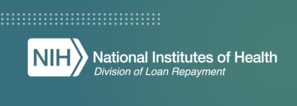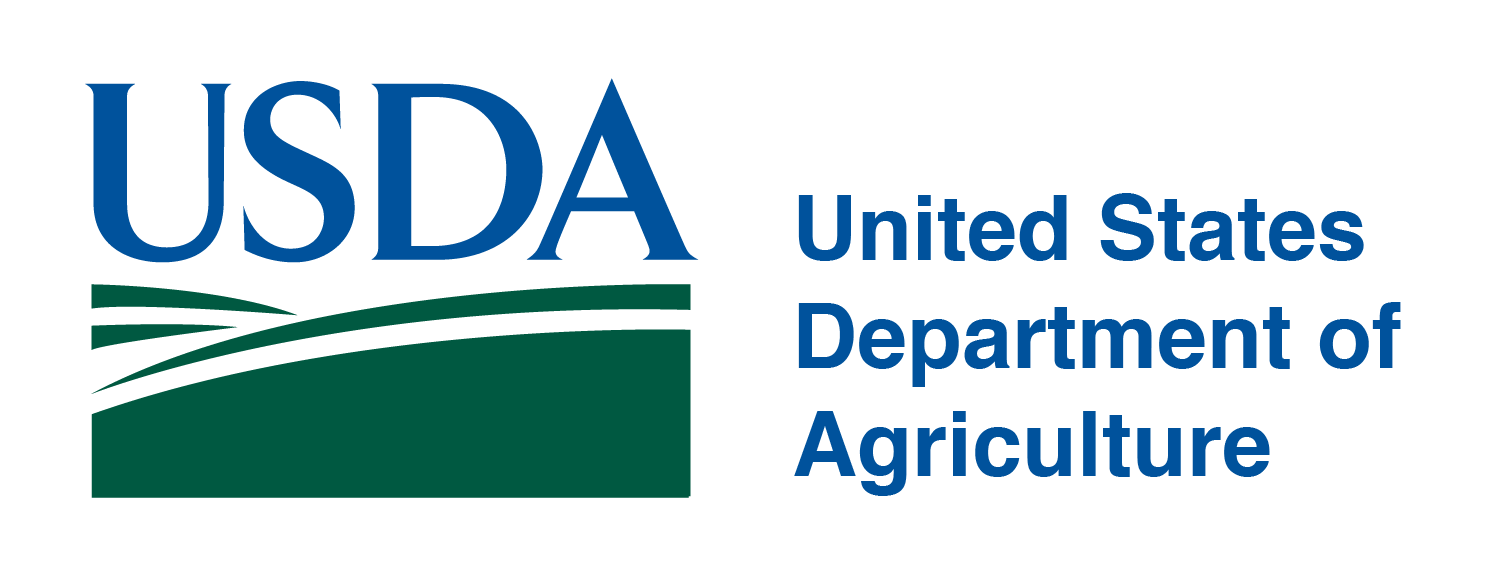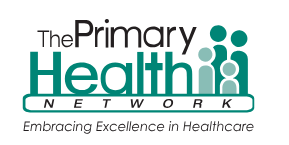- CMS: Medicare Program; Implementation of Prior Authorization for Select Services for the Wasteful and Inappropriate Services Reduction (WISeR) Model
- Public Inspection: CMS: Medicare Program: Implementation of Prior Authorization for Select Services for the Wasteful and Inappropriate Services Reduction Model
- CMS: Secretarial Comments on the CBE's (Battelle Memorial Institute) 2024 Activities: Report to Congress and the Secretary of the Department of Health and Human Services
- HHS: Patient Protection and Affordable Care Act: Marketplace Integrity and Affordability
- HRSA Announces Action to Lower Out-of-Pocket Costs for Life-Saving Medications at Health Centers Nationwide
- Public Inspection: HHS: Patient Protection and Affordable Care Act: Marketplace Integrity and Affordability
- Increased Risk of Cyber Threats Against Healthcare and Public Health Sector
- Eight Hospitals Selected for First Cohort of Rural Hospital Stabilization Program
- Announcing the 2030 Census Disclosure Avoidance Research Program
- CMS: Medicare Program; Hospital Inpatient Prospective Payment Systems for Acute Care Hospitals and the Long-Term Care Hospital Prospective Payment System and Policy Changes and Fiscal Year 2026 Rates; Requirements for Quality Programs; and Other Policy Changes; Correction
- CMS: Medicare Program; Hospital Inpatient Prospective Payment Systems for Acute Care Hospitals and the Long-Term Care Hospital Prospective Payment System and Policy Changes and Fiscal Year 2026 Rates; Requirements for Quality Programs; and Other Policy Changes; Correction
- CMS: Medicare and Medicaid Programs; Contract Year 2026 Policy and Technical Changes to the Medicare Advantage Program, Medicare Prescription Drug Benefit Program, Medicare Cost Plan Program, and Programs of All-Inclusive Care for the Elderly; Correction
- CMS: Medicare and Medicaid Programs; Contract Year 2026 Policy and Technical Changes to the Medicare Advantage Program, Medicare Prescription Drug Benefit Program, Medicare Cost Plan Program, and Programs of All-Inclusive Care for the Elderly; Correction
- CMS: Medicare Program; Prospective Payment System and Consolidated Billing for Skilled Nursing Facilities; Updates to the Quality Reporting Program for Federal Fiscal Year 2026
- CMS: Medicare Program; FY 2026 Hospice Wage Index and Payment Rate Update and Hospice Quality Reporting Program Requirements
NIH Now Accepting Extramural Loan Repayment Applications

The National Institutes of Health (NIH) is now accepting applications for the Extramural Loan Repayment Program (LRP)! Awardees can receive up to $100,000 in qualified educational debt repayment with a two-year award.
To learn more about eligibility requirements, application dates, and the benefits of receiving an LRP award, be sure to visit the LRP website, check out our overview video, and attend one of our upcoming events:
- September 4 – LRP Twitter Chat
- October 7 – LRP Technical Assistance Webinar
- November 6 – Ask Me Anything
Please note that the deadline to submit your Extramural LRP application is November 21, 2024.
USDA Launches Farmer Debt Consolidation Toolkit

The U.S. Department of Agriculture (USDA) has launched the Debt Consolidation Tool, an innovative online tool available through farmers.gov that allows agricultural producers to enter their farm operating debt and evaluate the potential savings that might be provided by obtaining a debt consolidation loan with USDA’s Farm Service Agency (FSA) or a local lender.
See USDA Launches Online Debt Consolidation Tool to Increase Farmer and Rancher Financial Viability for the press release.
HRSA Announces Steps to Overhaul the Nation’s Organ Transplant System

The Health Resources and Services Administration (HRSA) announced that for the first time in the 40-year history of the Organ Procurement and Transplantation Network (OPTN), the OPTN Board of Directors—the governing board that develops national organ allocation policy—is now separately incorporated and independent from the Board of long-time OPTN contractor, the United Network for Organ Sharing (UNOS). HRSA has awarded an OPTN Board Support contract to American Institutes for Research to support the newly incorporated OPTN Board of Directors.
These critical actions to better serve patients by breaking up the monopoly that ran the nation’s organ allocation system are part of the OPTN modernization plan announced by HRSA in March 2023. Prior to these steps, the national body responsible for developing organ allocation policy for the country—the OPTN—and the corporate entity contracted to implement the policy—UNOS—shared the exact same Board of Directors. The new board support contractor will be accountable to HRSA and will organize a special election for a new OPTN Board of Directors with a focus on eliminating conflicts of interest and ensuring that data, evidence, and the voices of clinical leaders, scientific experts, patients, and donor families are driving action and accountability. Moving forward, no member of the OPTN Board can sit on an OPTN vendor’s board of directors.
“Families anxiously waiting for a life-saving transplant for their loved one shouldn’t have to worry about how the system that determines who gets what organ is managed and governed,” said HRSA Administrator Carole Johnson. “That’s why we in the Biden-Harris Administration launched our major reform initiative to ensure patients, families, and clinicians have access to a best-in-class system that is fair, reliable, and transparent. Today’s announcements are an essential step forward in this work to make the system work better for patients and families.”
Under the Biden-Harris Administration, HRSA launched its Organ Procurement and Transplantation Network Modernization Initiative to address systemic issues that have plagued the national organ allocation system for years, including inequities in access to transplant, lost organs, conflicts of interest, system reliability issues, and lack of transparency.
Last year, the President’s Budget included both legislative and funding reforms to implement the Administration’s vision for reform, which bipartisan leaders in Congress embraced—leading to the enactment of the Securing the U.S. Organ Procurement and Transplantation Network Act in Fall 2023 and new appropriations commitments to implement the law.
With this new authority and funding, HRSA has worked swiftly to launch new opportunities to engage best-in-class expertise to support modernization. The OPTN Board Support contract awarded today will not only support the work associated with a new board election but also will provide logistical and governance support to the OPTN Board of Directors to improve the accountability and transparency of OPTN policymaking and governance processes. Additional separate, multi-vendor contracts to manage various functions of the OPTN will be awarded in the coming months.
Appalachian Universities Accepted Into Research Initiative

Fall semester is here, and the Appalachian Regional Commission (ARC) is excited to announce the selection of 16 Appalachian colleges and universities to participate in the research program this year!
Since 2001, 30+ schools (and 3K+ students!) from across the region have participated in our Appalachian Collegiate Research Initiative.
This program gives students the applied research tools they need to solve economic development challenges in their communities. 🔎
The full list of this year’s participating schools is online now. Stay tuned for more information about each of their research projects!
Build Capacity With Appalachian Community Foundations

The Appalachian Regional Commission (ARC) is excited to announce that 30 local philanthropic organizations from across 10 Appalachian states have been selected to participate in READY Community Foundations, the fourth and final learning track of our READY Appalachia capacity-building initiative. ✨
Participating organizations will receive no-cost training to improve their programming, operations, fundraising and financial impact. Upon successful completion, they will be eligible to apply for up to $25K in funding (no-match required) for internal capacity-building projects.
All of the organizations serve at least one of the following:
- Distressed areas
- Interagency Working Group on Coal and Power Plant Communities priority communities
- Rural Partners Network Community Networks communities
- Historically underserved and marginalized populations
Learn more about the participants and READY Community Foundations!
Crest and Oral-B Accepting Nominations for Promising Researcher Award
The Crest and Oral-B Promising Research Award promotes and recognizes excellence in oral health research. This annual award provides $5,000 to a promising researcher focused on preventive dentistry. Candidates must be enrolled in one of the following degree programs at an eligible institution: D.D.S., D.M.D., Ph.D. or equivalent, M.P.H., M.S., Advanced Dental Degree, or foreign-equivalent. The application deadline is September 16.
National Pediatric Academy Releases Oral Health Report on Identifying Abuse and Neglect
The American Academy of Pediatrics (AAP) published a new clinical report, “Oral and Dental Aspects of Child Abuse and Neglect.” The report contains updated recommendations for physicians on how to identify problems involving a child’s teeth, gums, and mouth that may be signs of physical or sexual abuse or neglect.
57% of Rural Hospitals Lack Maternity Care: 19 States with the Biggest Gaps
From Becker’s Hospital Review
In the past five years, over 100 rural hospitals have stopped delivering babies, contributing to the 57% of rural U.S. hospitals that lack labor and delivery services.
This finding comes from the Center for Healthcare Quality and Payment Reform. Its July report details the number of rural hospitals by state that lack maternity care services, those that do offer such services, the financial losses incurred from maternity care and the travel time to the nearest hospital providing OB services.
“Over 80% of pregnancy-related deaths are preventable with appropriate prenatal, labor & delivery, and post-partum care,” the CHQPR report notes. “Although improvements in maternity care are needed in all parts of the country to reduce mortality rates, one of the greatest challenges is in rural areas, because most rural hospitals are no longer providing maternity care at all.”
Of the 978 rural hospitals that offer labor & delivery services, almost 40% lost money on patient services overall in 2022 through 2023, meaning their ability to continue delivering maternity care is at risk.
Below are the 19 states with the highest percentage of rural hospitals lacking OB or maternity care. In each of these states, the percentage of rural hospitals without OB care exceeds the U.S. average of 57%. There are ties below, resulting in 19 states with 12 rankings for the greatest proportion of hospitals without OB care.
Readers can find CHQPR’s report on maternity care deserts among rural hospitals in full here.
1. Florida
Total rural hospitals: 22
Number without OB services: 20
Percentage without OB services: 91%
2. North Dakota
Total rural hospitals: 39
Number without OB services: 31
Percentage without OB services: 79%
3. Louisiana
Total rural hospitals: 56
Number without OB services: 42
Percentage without OB services: 75%
4. Illinois
Total rural hospitals: 74
Number without OB services: 55
Percentage without OB services: 74%
West Virginia
Total rural hospitals: 31
Number without OB services: 23
Percentage without OB services: 74%
5. Nevada
Total rural hospitals: 14
Number without OB services: 10
Percentage without OB services: 71%
6. Virginia
Total rural hospitals: 30
Number without OB services: 21
Percentage without OB services: 70%
7. Alabama
Total rural hospitals: 52
Number without OB services: 36
Percentage without OB services: 69%
Oklahoma
Total rural hospitals: 81
Number without OB services: 56
Percentage without OB services: 69%
8. Mississippi
Total rural hospitals: 72
Number without OB services: 49
Percentage without OB services: 68%
9. Arkansas
Total rural hospitals: 50
Number without OB services: 32
Percentage without OB services: 64%
Georgia
Total rural hospitals: 72
Number without OB services: 46
Percentage without OB services: 64%
Montana
Total rural hospitals: 55
Number without OB services: 35
Percentage without OB services: 64%
10. South Dakota
Total rural hospitals: 49
Number without OB services: 31
Percentage without OB services: 63%
Pennsylvania
Total rural hospitals: 43
Number without OB services: 27
Percentage without OB services: 63%
11. Iowa
Total rural hospitals: 94
Number without OB services: 58
Percentage without OB services: 62%
12. Texas
Total rural hospitals: 164
Number without OB services: 97
Percentage without OB services: 59%
Kansas
Total rural hospitals: 100
Number without OB services: 59
Percentage without OB services: 59%
California
Total rural hospitals: 58
Number without OB services: 34
Percentage without OB services: 59%
New White Paper Details Quality Improvement Through Swing Bed Utlization

Stroudwater has released a new brief detailing how Critical Access Hospitals (CAH) utilization of the swing bed program increased quality scores.
A CAH in southcentral Kentucky needed to improve its risk-adjusted mobility performance scores for its swing bed patients, and their rehabilitation and nursing staff needed to work as a team in motivating their swing bed patients to achieve their mobility goals, heal, and return home.
To learn how we helped this CAH improve its risk-adjusted mobility score by over 20%, please click here.
Recently, we published a white paper detailing how CAHs can enhance their role as providers of high-quality, community-centered care through proactive quality reporting and strategic use of data insights.
To read the full white paper, please click here.
Pennsylvania FQHC Network Unveils ‘Buddy Bench’ Initiative

From the Record-Argus
In collaboration with Buhl Park, Primary Health Network (PHN), based in Sharon, PA, recognizes that loneliness and isolation can profoundly affect individuals’ mental and emotional well-being and have answered with a call of action by implementing a new initiative, the Buddy Bench, which debuted at Buhl Park Friday.
The first of the Buddy Benches, facing Lake Julia at Buhl Park, was dedicated by Dr. George Garrow, CEO of the Primary
Health Network, and Tom Roskos, executive director of Buhl Park, with the idea that connections, even something as simple as sitting with someone, shows compassion and empathy, something Garrow believes is instrumental in today’s world.
“Our mission at Primary Health Network has always been to support the health of the community in every sense of the word, and this initiative is a testament to that commitment,” he said.
In introducing the concept of the PHN Buddy Bench project, Garrow said it is “a simple, yet powerful idea aimed at addressing the challenges of loneliness and isolation that many in our community face,” one of the many community initiatives under the auspices of PHN.
“Loneliness can be a heavy burden, often affecting one’s mental and emotional well-being that are not always physically visible, but deeply felt,” Garrow said. “This Buddy Bench is more than just a place to sit, it is a symbol of our collective effort to create spaces where people can connect and support one another.
“We are fostering an environment where everyone feels that they belong and that they are valued,” Garrow said. “I am reminded of the timeless wisdom of Mr. Fred Rogers, a beloved figure who deeply understood the power of human connection.”
In citing Rogers’ quote, “The greatest gift you can ever give is your honest and true self,” Garrow said Rogers’ sentiment reflects the PHN mission “that every person deserves to be seen, heard and valued. I encourage you to reach out to those around you, offer a kind word or simply be present,” as small gestures could provide a big impact.
As a way to make conversation starters, Communication Rock Gardens that include simple ice breaker questions were situated in front of the bench, that way if someone does see the bench is occupied, they can join the person or people on it and engage in easy conversation.
“Buhl Park is a gem in our community, where nearly a million people visit each year,” Roskos said, “and the opportunity for folks to get away, sit on a bench and start a conversation with somebody they may or may not know, to help combat this issue” of the feelings of loneliness and isolation is stepping in the right direction.
Roskos praised Garrow and PHN for their work, saying they are “a symbol for thoughtfulness and caring” in communities around the region.
While it is the first of the Buddy Benches, Primary Health has said this is not going to be an isolated outreach, instead, plans to expand to other communities served by PHN.
Another community outreach PHN is working on a literacy project, adding Little Free Libraries to communities where they offer clinical services.
Additional information about Primary Health Network, the Primary Health Network Charitable Foundation and its initiatives, visit primary-health.net.
